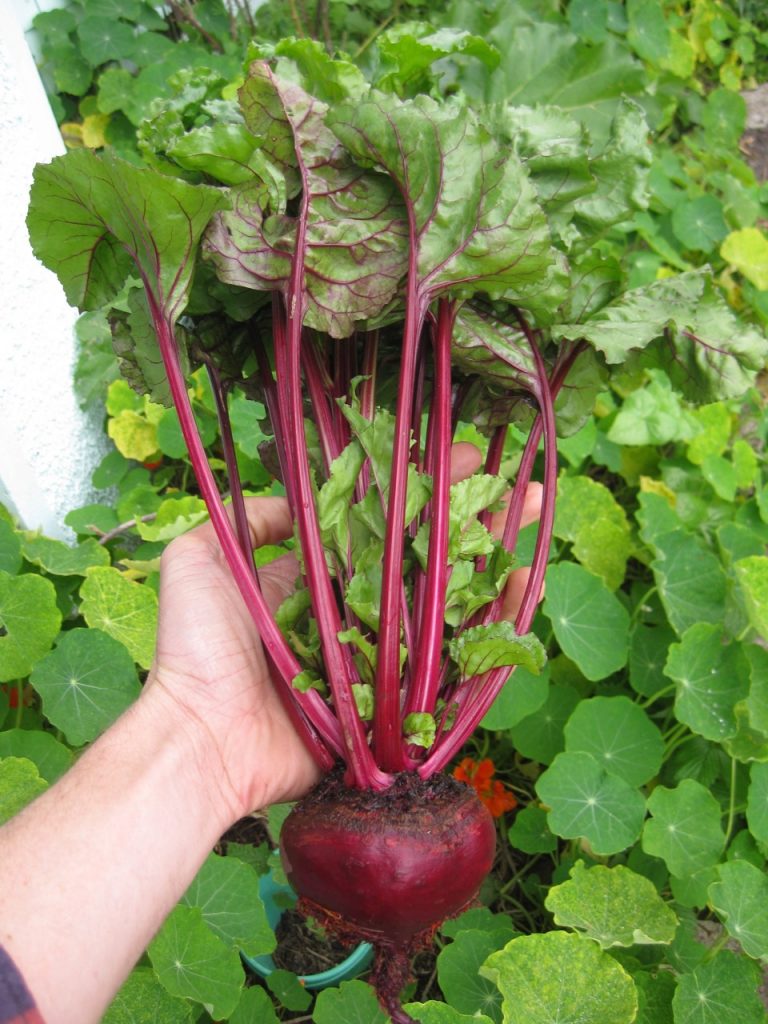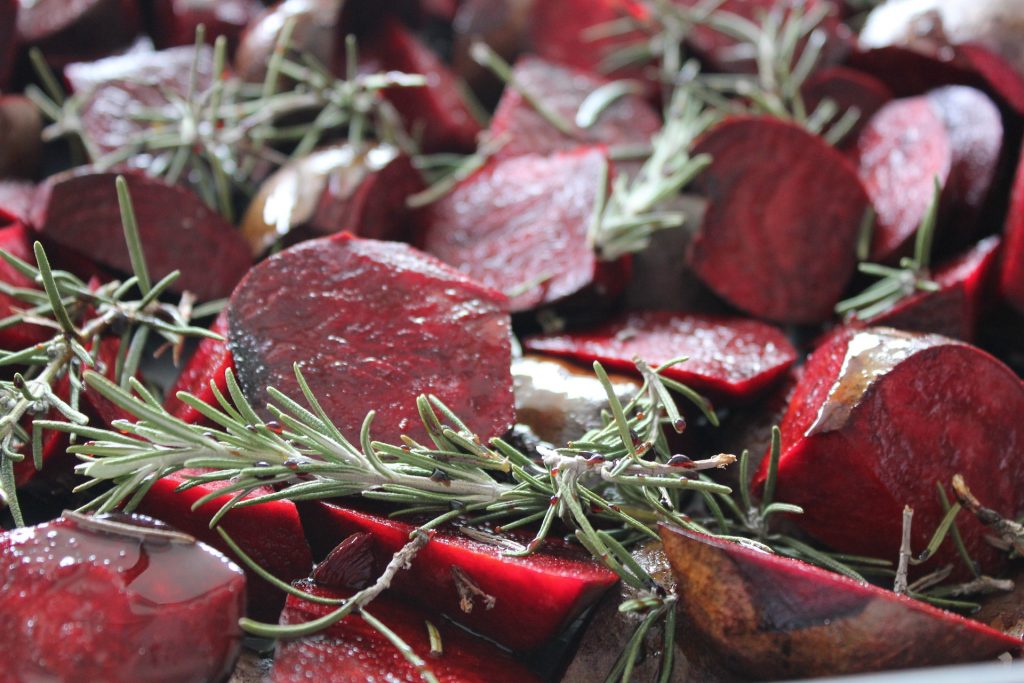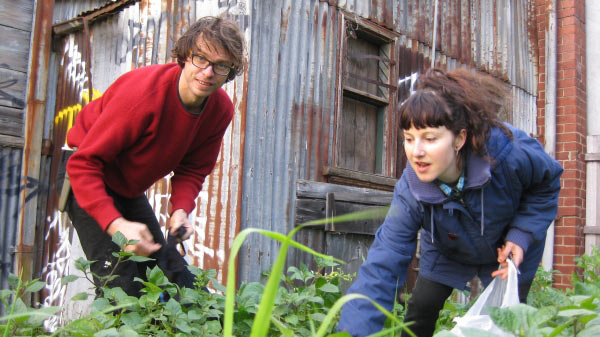Beta Vulgaris
Family: Chenopodiaceae
The beetroot belongs to the Chenopodiaceae family along with Quinoa and Spinach amongst others. Beetroot varieties are the very same species as silverbeet and rainbow chard.
History
It is believed that the Greeks first cultivated the beets for their delicious leaves around 300BC. The large bulbous root crop we know today only surfaced through extensive selections some 1300 years later, around the 17th century. Australians be proud and hoist your salad roll skyward, for we are the most voracious consumers per capita of the beetroot in the world.
Varieties
There are many varieties and one should decide what one wants a beet for. Colour? Taste? Dinner table conversation starter? Long term storage? If you don’t like the colour and ‘bleed’ of the red beets, you can grow a white or yellow one – sure to impress! Beetroot, like rainbow chard and silverbeet, can be grown for aesthetic reasons too. Some interesting ones found in Australia and sold through Eden Seeds are:
Chioggia – a candy striped beet.
Golden – a yellow beet with very useful leaves used like spinach.
Early Wonder – the first beet off the mark.
Bull’s Blood – wonderful foliage and border plant. It has purple-black leaves and contrasts well with lighter varieties of Chard.
Health and Nutrition
Beetroot has very high nutrient content and the leaves are rich in vitamin A, and the bulb is high in vitamin C. It is high in potassium and fibre and contains more iron, calcium, and trace minerals than spinach. It is a source of folate and the foliage contains beta-carotene which is an antioxidant. The roots have been used since Roman times as a blood strengthener. The red pigment in beetroot can pass unbroken down through the digestive system with sometimes startling results. While not dangerous, it can lead to embarrassingly unnecessary doctors appointments!
Beetroot probably helps prevent heart disease, strokes and liver disease.[1] Beetroot contains tryptophan which increases sense of well being with its antidepressant properties. [2]
Sometimes eating beetroot can cause some false-alarm medical concerns though, so be prepared.
1 http://www.umm.edu/altmed/articles/betaine-000287.htm
2 http://www.ncbi.nlm.nih.gov/pubmed/7156248
Cultivation
 Beetroot is simply fantastic as an ornamental edible and, with leaves ranging from nearly black to a rich green to red veined, they should be considered as a border plant all around the garden.
Beetroot is simply fantastic as an ornamental edible and, with leaves ranging from nearly black to a rich green to red veined, they should be considered as a border plant all around the garden.
If you sow seed directly, thin them out (using the harvest for salad greens), leaving only the strongest and healthiest lookers. You want to get with the Darwinian program here and sculpt the future of beetroots by being ruthless and leaving only the strong to make it to maturity. Bear in mind these little plants represent the finest characteristics of their humble family and although strong in genetic material are nonetheless only little seedlings, so pinch or cut the nearby wannabes, don’t pull them or you will unnecessarily disturb the roots of your chosen ones.
Beetroot is a fairly easy to grow crop that doesn’t takes up a great deal of space. Plants need a rich soil but do not apply un-aged manure directly. For longer rooted varieties you will need to consider the depth of the soil and make sure there is not too much compaction as they like a loose friable soil like all root crops . Do not apply too much nitrogen in the form of manures, blood and bone or too rich a compost as this will produce too much leaf growth and not enough bulb; it can also do this with too much water. Side dressings of phosphorous help with root development (sheep manures are great). Make sure to not let the roots dry out too much. The seeds take about 10-14 days to germinate. Sow after the last frost in spring at fortnightly to monthly intervals through to late autumn to keep a steady supply. Baby beets can be harvested at 10 weeks.
*Tip – soaking the seeds in warm water overnight will help with germination.
Pests and diseases
Beetroots are tough characters when it comes to fending off attacks. The only common problem is fungal leaf mould and even this doesn’t usually affect root yield too drastically. Just remove the problem leaves or plant. Oh yeah and they sometimes get nibbled as seedlings by slugs and snails.
Storage
Harvest after 10 weeks. There is a temptation to let them grow to wait for an increase in size but don’t leave them in the ground for too long or they will start to become tough and woody. Remember – the smaller they are the sweeter the crop. Store in layers of sand in a cool and frost free environment or alternatively, if you have the space, you can overwinter – just leave in the ground and pick at will.
Seed Saving
You’ll need to allow a few plants of the same variety to go to seed (this occurs in the second year), so consider if you have enough space. Also if you want them to stay true to type you’ll need to put paper bags over them to stop cross-pollination from wind or bees. When fully mature and go completely dry, harvest and store in an envelope lablled with seed name, variety and harvest date. They should remain viable for 3-5 years.
Uses and recipes
Try beetroot cubed and roasted with garlic and olive oil. You can make a delicious beetroot soup (borscht) to be eaten with sour cream or yogurt. Try flavouring it with dill. Pickled in a light brine for two weeks, beetroots become a visually spectacular and tasty side dish. Add it grated to chocolate cake.
Trivia
The record for the heaviest beetroot is 23.4 kilograms, in England. The challenge has been laid you would be agriculturalists!
Quotes
‘You can’t squeeze blood out of a turnip’
‘An old Ukrainian proverb warns, “A tail that begins with the beet will end with the devil”’ — Tom Robbins, Jitterbug Perfume




